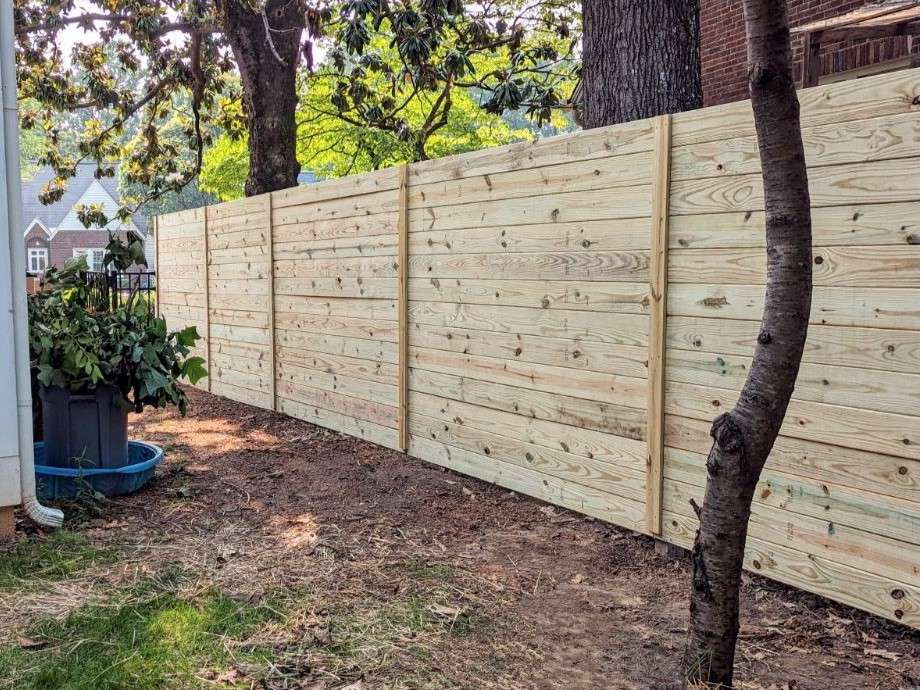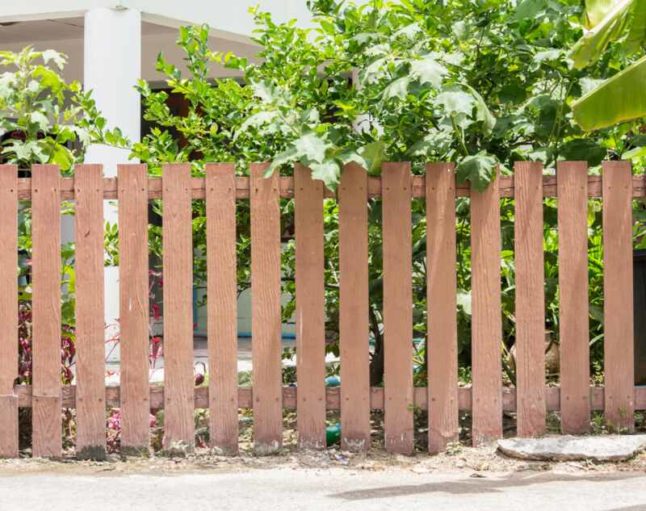All Categories
Featured
Mounting a fencing on irregular or sloped surface might look like a complex job, but with the best methods, it's entirely feasible to attain a beautiful and functional result. Whether you're dealing with a high slope or a light incline, there are various installment methods to match your needs. Right here's everything you need to understand about setting up a fencing on sloped terrain.
Obstacles of Setting Up a Fence on Sloped Surface. Sloped or unequal terrain can create some challenges during fence setup, particularly when it comes to seeing to it the fence remains level and protect. The primary problem is ensuring that the fence doesn't look misaligned or become unstable over time. A correctly installed fencing on sloped land calls for the appropriate technique to preserve both structural honesty and aesthetic appeal. Without mindful consideration, an improperly mounted fencing could lead to uneven panels, sagging, or even damage from wind or climate condition.
![]()
Ideal Fence Methods for Sloped Terrain. When it involves sloped terrain, 2 main installation methods are typically made use of: the step approach and the rack technique.
In this style, each area of the fencing is "stepped" to follow the surface's incline. The private panels are positioned at various heights to match the incline of the land, creating a stair-step result throughout the size of the fencing.
The step installation approach works well with materials such as timber, plastic, and metal, and it's a fairly uncomplicated installation procedure. However, it might leave voids at the base of the fencing in some areas, depending on the dimension of the incline.
Shelf Setup Approach For steeper slopes, a racked installment could be the far better choice. This approach allows the fence panels to follow the natural incline of the land without stepping.
A racked setup ensures that the fencing keeps a constant height throughout its size while still adapting to the slope. This technique is particularly matched for chain-link or wrought iron fences, but can additionally work well with timber or vinyl fences that are versatile sufficient to get used to the surface.
Choosing the Right Fence Product for Sloped Land. The selection of product plays a substantial duty in exactly how well the fence will perform on uneven ground. Some products are more adaptable to sloped terrain than others, so it's essential to pick intelligently.
Timber Fence: Wood is a functional material and works well for both stepped and racked installations. It can be customized to fit any type of slope, though it calls for regular maintenance to stop degeneration, particularly on uneven terrain where dampness buildup can be a concern.
Vinyl Fence: Plastic fencings are sturdy, low-maintenance, and appropriate for both stepped and racked setups. Due to the fact that vinyl is a rigid material, it may not be as versatile to high slopes, yet it still provides a smooth, constant line when set up properly.
Steel Fence (Chain-Link or Wrought Iron): Steel fencings like chain-link or wrought iron are excellent for sloped terrain because they can be adjusted to adhere to the land's all-natural incline. Chain-link is especially flexible and can be mounted in a method that permits the fencing to follow the terrain's slope without producing spaces.
Composite Fence: Composite fencings, made from a mix of wood fibers and plastic, are also an excellent alternative for sloped areas. These fences are sturdy, weather-resistant, and can be tailored for various kinds of surface.
Just How to Prepare for Setup. Before beginning a fence setup on unequal terrain, it's vital to prepare the home effectively. Right here are a couple of actions to consider:
Assess the Slope: Start by determining the slope of the land. Use a degree or a gauging tape to figure out the incline's intensity. This will help you pick the appropriate installation technique and products.
Clear the Location: Eliminate any challenges such as rocks, trees, or shrubs from the area where the fencing will be mounted. This will ensure smooth installment and stop damage to the fencing or the bordering landscape.
Examine Regional Rules: Guarantee that you are aware of any regional structure codes or regulations for fencing installments. Some areas have certain rules regarding the elevation of fencings, obstacle requirements, or the kinds of products enabled.
Select the Right Fencing Type: Based on your slope and the look you want, pick the right materials and setup technique. Timber, vinyl, and steel all have their advantages, yet you need to pick the one that fits your particular surface and visual objectives.
![]()
Expert Installment vs. Do It Yourself. While it is feasible to set up a fence on uneven or sloped terrain yourself, it might be difficult, particularly for steep inclines or larger areas. Employing a specialist fencing installer can ensure that the fencing is properly lined up, stable, and resilient. Professionals additionally have the experience to analyze the land, utilize the suitable installment methods, and make certain that your fencing meets regional building codes.
Verdict. Mounting a fencing on sloped or unequal terrain is absolutely possible with the right strategies, products, and tools. Whether you go with an action or racked installment, or pick the most suitable fencing material, ensuring that the fence follows the contours of the land while continuing to be steady is essential. Taking the time to examine your residential property, choose the ideal products, and possibly working with a specialist can cause a wonderfully mounted fence that includes both privacy and visual attract your building.
Obstacles of Setting Up a Fence on Sloped Surface. Sloped or unequal terrain can create some challenges during fence setup, particularly when it comes to seeing to it the fence remains level and protect. The primary problem is ensuring that the fence doesn't look misaligned or become unstable over time. A correctly installed fencing on sloped land calls for the appropriate technique to preserve both structural honesty and aesthetic appeal. Without mindful consideration, an improperly mounted fencing could lead to uneven panels, sagging, or even damage from wind or climate condition.

Ideal Fence Methods for Sloped Terrain. When it involves sloped terrain, 2 main installation methods are typically made use of: the step approach and the rack technique.
In this style, each area of the fencing is "stepped" to follow the surface's incline. The private panels are positioned at various heights to match the incline of the land, creating a stair-step result throughout the size of the fencing.
The step installation approach works well with materials such as timber, plastic, and metal, and it's a fairly uncomplicated installation procedure. However, it might leave voids at the base of the fencing in some areas, depending on the dimension of the incline.
Shelf Setup Approach For steeper slopes, a racked installment could be the far better choice. This approach allows the fence panels to follow the natural incline of the land without stepping.
A racked setup ensures that the fencing keeps a constant height throughout its size while still adapting to the slope. This technique is particularly matched for chain-link or wrought iron fences, but can additionally work well with timber or vinyl fences that are versatile sufficient to get used to the surface.
Choosing the Right Fence Product for Sloped Land. The selection of product plays a substantial duty in exactly how well the fence will perform on uneven ground. Some products are more adaptable to sloped terrain than others, so it's essential to pick intelligently.
Timber Fence: Wood is a functional material and works well for both stepped and racked installations. It can be customized to fit any type of slope, though it calls for regular maintenance to stop degeneration, particularly on uneven terrain where dampness buildup can be a concern.
Vinyl Fence: Plastic fencings are sturdy, low-maintenance, and appropriate for both stepped and racked setups. Due to the fact that vinyl is a rigid material, it may not be as versatile to high slopes, yet it still provides a smooth, constant line when set up properly.
Steel Fence (Chain-Link or Wrought Iron): Steel fencings like chain-link or wrought iron are excellent for sloped terrain because they can be adjusted to adhere to the land's all-natural incline. Chain-link is especially flexible and can be mounted in a method that permits the fencing to follow the terrain's slope without producing spaces.
Composite Fence: Composite fencings, made from a mix of wood fibers and plastic, are also an excellent alternative for sloped areas. These fences are sturdy, weather-resistant, and can be tailored for various kinds of surface.
Just How to Prepare for Setup. Before beginning a fence setup on unequal terrain, it's vital to prepare the home effectively. Right here are a couple of actions to consider:
Assess the Slope: Start by determining the slope of the land. Use a degree or a gauging tape to figure out the incline's intensity. This will help you pick the appropriate installation technique and products.
Clear the Location: Eliminate any challenges such as rocks, trees, or shrubs from the area where the fencing will be mounted. This will ensure smooth installment and stop damage to the fencing or the bordering landscape.
Examine Regional Rules: Guarantee that you are aware of any regional structure codes or regulations for fencing installments. Some areas have certain rules regarding the elevation of fencings, obstacle requirements, or the kinds of products enabled.
Select the Right Fencing Type: Based on your slope and the look you want, pick the right materials and setup technique. Timber, vinyl, and steel all have their advantages, yet you need to pick the one that fits your particular surface and visual objectives.

Expert Installment vs. Do It Yourself. While it is feasible to set up a fence on uneven or sloped terrain yourself, it might be difficult, particularly for steep inclines or larger areas. Employing a specialist fencing installer can ensure that the fencing is properly lined up, stable, and resilient. Professionals additionally have the experience to analyze the land, utilize the suitable installment methods, and make certain that your fencing meets regional building codes.
Verdict. Mounting a fencing on sloped or unequal terrain is absolutely possible with the right strategies, products, and tools. Whether you go with an action or racked installment, or pick the most suitable fencing material, ensuring that the fence follows the contours of the land while continuing to be steady is essential. Taking the time to examine your residential property, choose the ideal products, and possibly working with a specialist can cause a wonderfully mounted fence that includes both privacy and visual attract your building.
Latest Posts
Make Your Dream Fence a Fact with Montana Fence Funding
Published May 05, 25
1 min read
Trusted Expenses Door Solutions for Homes and Services
Published May 04, 25
1 min read
Need Complete Car Maintenance Close By? Car-X St. Louis Delivers Quality and Convenience
Published May 04, 25
1 min read
More
Latest Posts
Make Your Dream Fence a Fact with Montana Fence Funding
Published May 05, 25
1 min read
Trusted Expenses Door Solutions for Homes and Services
Published May 04, 25
1 min read
Need Complete Car Maintenance Close By? Car-X St. Louis Delivers Quality and Convenience
Published May 04, 25
1 min read